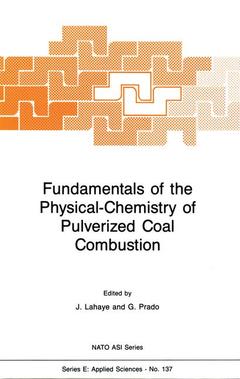The study of coal for the production of energy is certainly not a new area of research. Many research works were carried out to improve the efficiency of industrial and domestic facilities. In the sixties, however, because of the availability and low cost of petroleum, coal consumption decreased and the research effort in this area was minimum. Meanwhile, the situation has totally changed. Considering the reserves of oil and the instability ofregions where they are located, it is becoming absolutely necessary to develop other sources of energy.The major alternative to oil appears to be coal, at least for the near future. Indeed, the reserves known today represent several centuries of energy consumption.!t is therefore becoming urgent to develop efficient and non polluting technologies to produce energy from coal. The main possibilities are : · liquefaction · gasification · directed combustion. Research and development efforts on liquefaction have been considerably reduced because of high cost of technologies involved and poor prospects for the next two decades. Research works on gasification are progressing; it is a promising approach. However, direct combustion either in pulverized coal furnaces or in fluidized beds is the more promising way of expanding rapidly the utilization of coal. These techniques are already used in some facilities but many environmental problems remain, slowing down their development.




